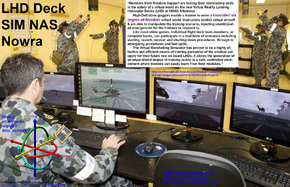t68
Well-Known Member
@SpazSinbad an interesting reply to that article you posted, via Putting F-35B on the Canberra Class LHDs: The Debate Continues - Steve George
I have been saying something along the same lines for some time about offshore oil dependency, considering how lot of our fuel inports come from Asia
I have been saying something along the same lines for some time about offshore oil dependency, considering how lot of our fuel inports come from Asia
I was merely a junior officer in our RAAF, but here’s the thing. Australia no longer supplies its own oil, thus is totally reliant on imports. Scenario: The cargo on the fully loaded super tanker, on which all of our military effort, air land and sea will rely, is approaching the Australian mainland, transitting via the Timor Sea north of Darwin, and heading for the Pacific Ocean, via Torres Strait, and thence down the eastern seaboard to either Sydney or Melbourne. The tanker is exposed to our northern enemies for a period of three days, assuming best speed. It is accompanied by a small fleet of escort frigates/destroyers. Let us assume our enemies possess the carrier-busting missile the Chinese are rumoured to have. Period of greatest exposure = 72 hours. Now do the math to work out how many fast movers we need to provide a capable Combat Air Patrol overhead the tanker for those 72 hours. Previously mentioned facts are the transit time to/from, loiter time overhead, minimum numbers of fighters with the legs and weapons to be a credible deterrent/shoot down force, before the long range carrier busting missile is launched from a stand off position. Let’s assume a CAP of 4 aircraft, with time on task of 2 hours. Time to get there = 1 hour, time on task = 2 hours, time to get home = 1 hour. So, to provide a CAP even for 24 hours uses up aircraft/crew at a prodigious rate……perhaps 28 aircraft/crews for a 24 hour period. My figures are rubbery but they serve to illustrate the point. Any fool can see that we will need at least 84 aircraft/crews for the task, assuming the usual unserviceabilities and crew unavailability. Australia has how many FA-18’s, assuming the boys in blue will committ them. A seaborne platform equipped with a credible squadron of fast movers is absolutely critical to our war fighting capability over both land and sea. I was merely a Flight Lieutenant (ex fleet air arm) and I am a fool, but I can see the glaringly obvious. Why cannot the senior officers charged with the lives of many not also see this?
Last edited:

